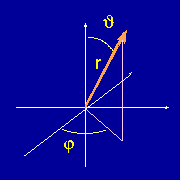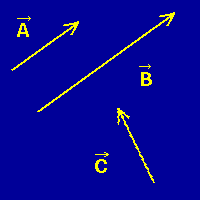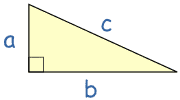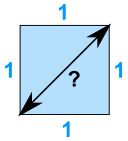
Keystone High School Physics
1st Quarter - Week 4

Vectors
| In order to understand the discoveries of Newton, we must have an understanding of three basic quantities: (1) velocity, (2) acceleration, and (3) force. In this section we define the first two, and in the next we shall introduce forces. These three quantities have a common feature: they are what mathematicians call vectors. |
Examples of Scalar Quantities |
| Vectors are quantities that require not only a magnitude, but a direction to specify them completely. Let us illustrate by first citing some examples of quantities that are not vectors. The number of gallons of gasoline in the fuel tank of your car is an example of a quantitity that can be specified by a single number---it makes no sense to talk about a "direction" associated with the amount of gasoline in a tank. Such quantities, which can be specified by giving a single number (in appropriate units), are called scalars. Other examples of scalar quantities include the temperature, your weight, or the population of a country; these are scalars because they are completely defined by a single number (with appropriate units). |
Examples of Vector Quantities |
 However, consider a velocity. If we say that a car is going 70 km/hour, we
have not completely specified its motion, because we have not specified the
direction that it is going. Thus, velocity is an example of a vector
quantity. A vector generally requires more than one number to specify it; in
this example we could give the magnitude of the velocity (70km/hour), a
compass heading to specify the direction (say 30 degrees from North), and
an number giving the vertical angle with respect to the Earth's surface
(zero degrees except in chase scenes from action movies!).
The adjacent figure
shows a typical coordinate system for specifying a vector in terms of
a length r and two
angles, theta and phi.
However, consider a velocity. If we say that a car is going 70 km/hour, we
have not completely specified its motion, because we have not specified the
direction that it is going. Thus, velocity is an example of a vector
quantity. A vector generally requires more than one number to specify it; in
this example we could give the magnitude of the velocity (70km/hour), a
compass heading to specify the direction (say 30 degrees from North), and
an number giving the vertical angle with respect to the Earth's surface
(zero degrees except in chase scenes from action movies!).
The adjacent figure
shows a typical coordinate system for specifying a vector in terms of
a length r and two
angles, theta and phi.
|
Graphical Representation of Vectors |
 Vectors are often distinguished from
scalar quantities either by placing a small arrow over the quantity, or by
writing the quantitity in a bold font. It is also common to indicate a vector
by drawing an arrow whose length is proportional to the magnitude of the
vector, and whose direction specifies the orientation of the vector.
Vectors are often distinguished from
scalar quantities either by placing a small arrow over the quantity, or by
writing the quantitity in a bold font. It is also common to indicate a vector
by drawing an arrow whose length is proportional to the magnitude of the
vector, and whose direction specifies the orientation of the vector.
In the adjacent image we show graphical representations for
three vectors. Vectors A and C have the same
magnitude but different directions. Vector B has the same orientation as
vector A, but has a magnitude that is twice as large. Each of these represents
a different vector, because for two vectors to be equivalent they must have
both the same magnitudes and the same orientations.
|
Pythagorean Theorem |

Using what we have learned in previous math classes we can solve for simple vectors using the Pythagorean Theorem. The square of a (a2) plus the square of b (b2) is equal to the square of c (c2): a2 + b2 = c2 |
| EXAMPLE: What is the diagonal distance across a square with all sides at the unit of 1? | |
 |
a2 + b2 = c2 12 + 12 = c2 1 + 1 = c2 2 = c2 c2 = 2 c = √2 = 1.4142... |
Right Triangles |
||
|
Sine, Cosine and Tangent are all based on a Right-Angled Triangle Before getting stuck into the functions, it helps to give a name to each side of a right triangle: 
|
| Example 1: What are the sine, cosine and tangent of a 30° triangle? | ||||||
|
The classic 30° triangle has a hypotenuse of length 2, an opposite side of length 1 and an adjacent side of
√(3): |
||||||
 |
||||||
| Now we know the lengths, we can calculate the functions: |
||||||
|
||||||
